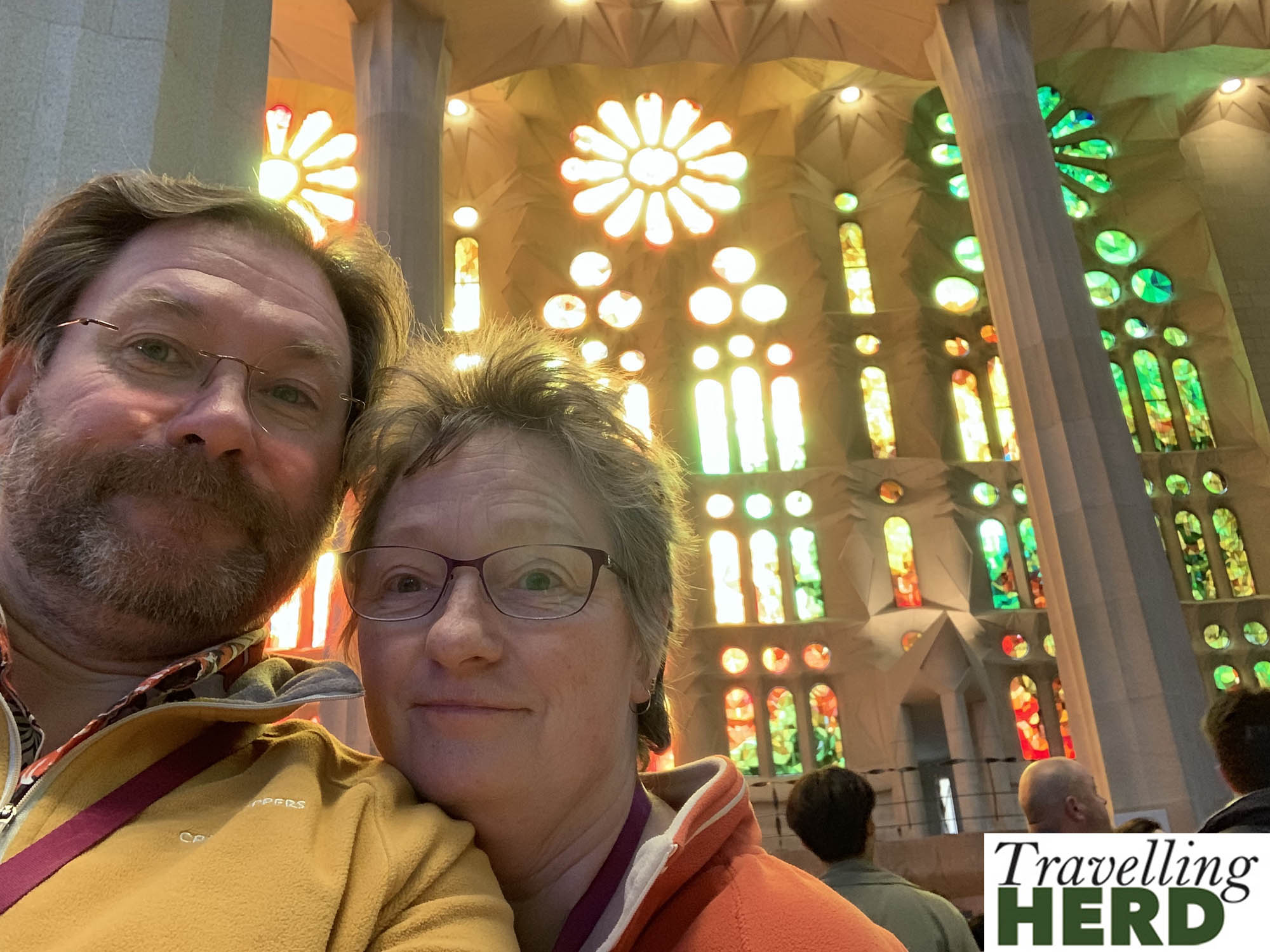Wednesday, 1st May 2019
Returning by train to Barcelona, we had again planned ahead and booked tickets online, this time to visit the Palau de la Musica Catalana in the afternoon. This beautiful modernist building was designed by Lluís Domènech i Montaner as a venue for the Orfeo Catala to perform a repertoire of Catalan choral music.
Located on the site of a former monastery, the building is compact and views of the exterior were limited by the proximity of the surrounding buildings. However, in 2003 the parish church adjacent to the Palau which was originally part of the monastery, was demolished to allow for extensions to the Palau and you can now sit in a square drinking coffee and admiring the huge stained glass windows designed by Domènech.
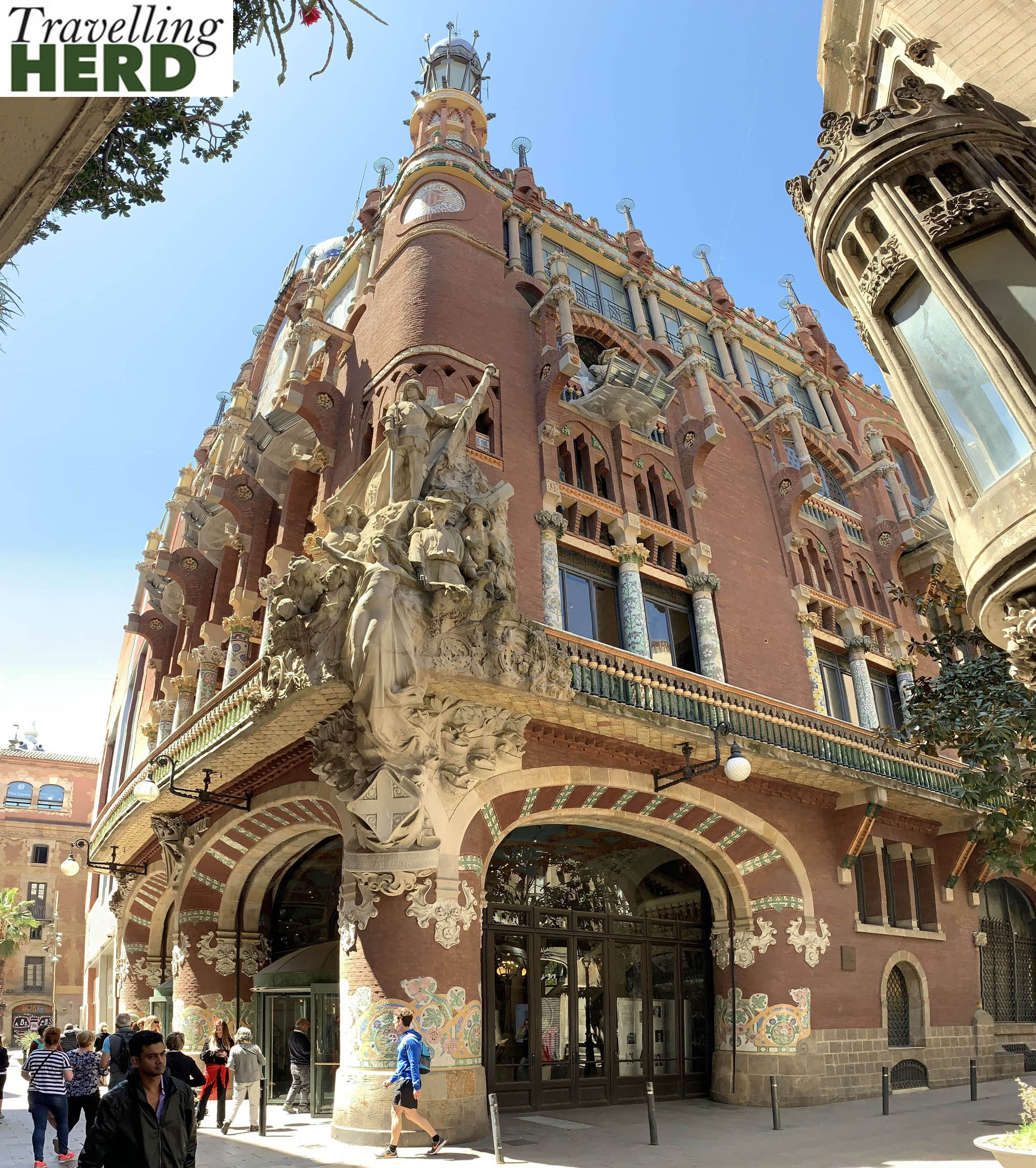
Opened in 1908, the facade features an imposing sculpture, almost like the figurehead on the prow of a ship, showing Saint George [the patron saint of both Catalonia and England] looking protective above an allegory of popular music.
The concert hall itself is lavishly decorated with sculptures, stained glass and mosaics. This is an unusual concert hall with natural light streaming in through stained glass windows and an enormous skylight shaped like an upside down bell, depicting a choir of female angels encircling the sun. There are tours every hour on the hour in English and as part of the tour, you are treated to a powerful blast of organ music to show off both the organ and the acoustics: Bach’s Toccata and Fugue in D Minor invoked images of Christopher Lee as Hammer Horror’s Dracula and Emerson, Lake and Palmer in their heyday. [Watch video of the day, below.]
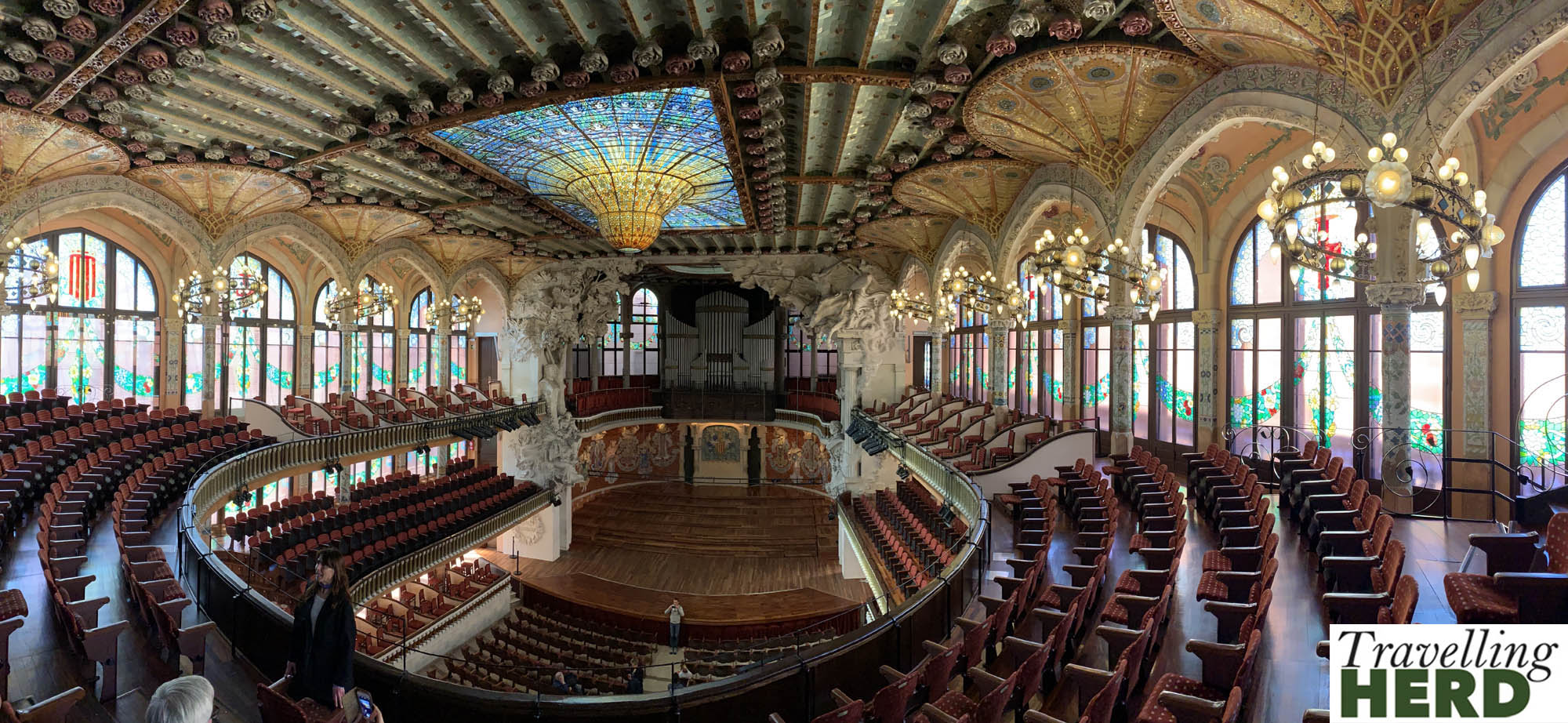
Matilda had read about a walking tour taking in the best of Barcelona’s Modernist buildings. Whilst this is an excellent idea, the execution seemed to lack focus. The Tourist Information office underneath Plaça de Catalunya denied all knowledge and after asking in another Tourist Office we were directed to the Museum of Modernism. Here, instead of a foldable portable map, we found the “Modernism Route” was a rather more cumbersome book. However, as there are so many beautiful buildings and we hope to return, we decided to make the investment. We then strolled past many historic sites, including the Castell dels Tres Dragons, the Mercat Del Born [below] which includes the ruins of the buildings of Old Barcelona, uncovered in 2001, which were demolished to make way for the military citadel on this site in 1715.
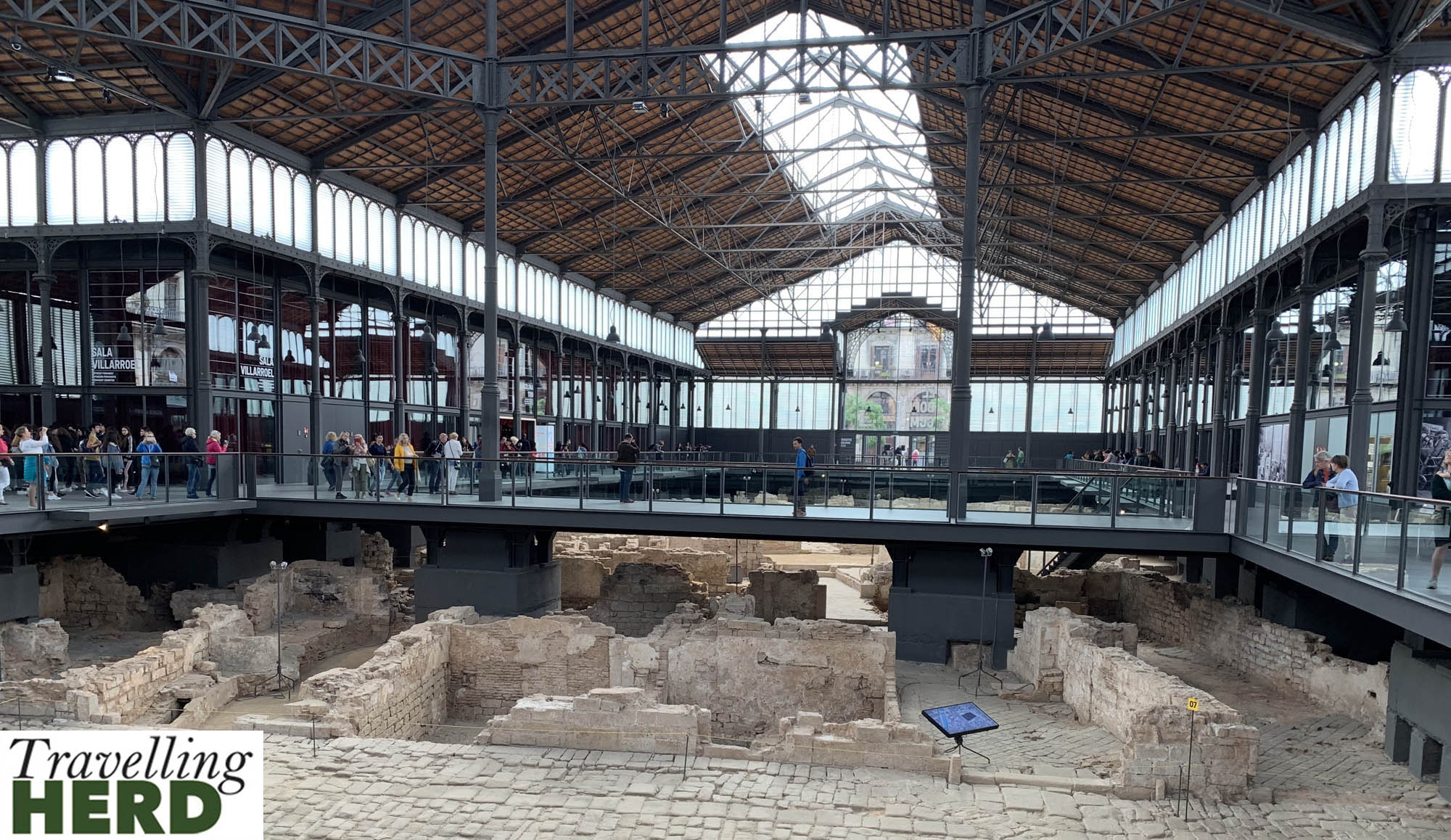
Our route continued on through Plaça Reial, featuring lampposts designed by Gaudi . . .
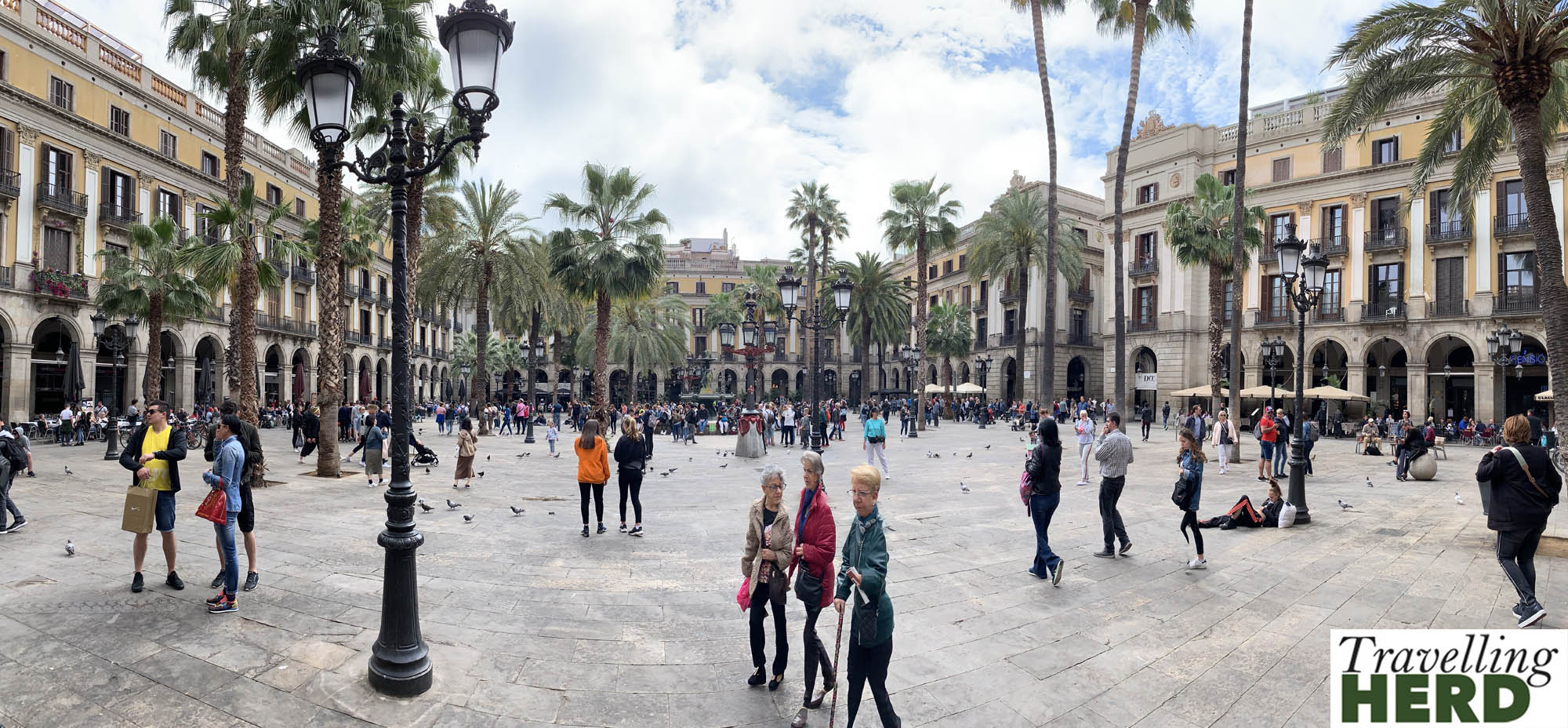
. . . and to the Antiga Casa Figueres, now the Pastelería Escribà, where we stopped for coffee . . .

. . . and on to Palau Güell, Gaudi’s first great commission from his patron Eusebi Güell.
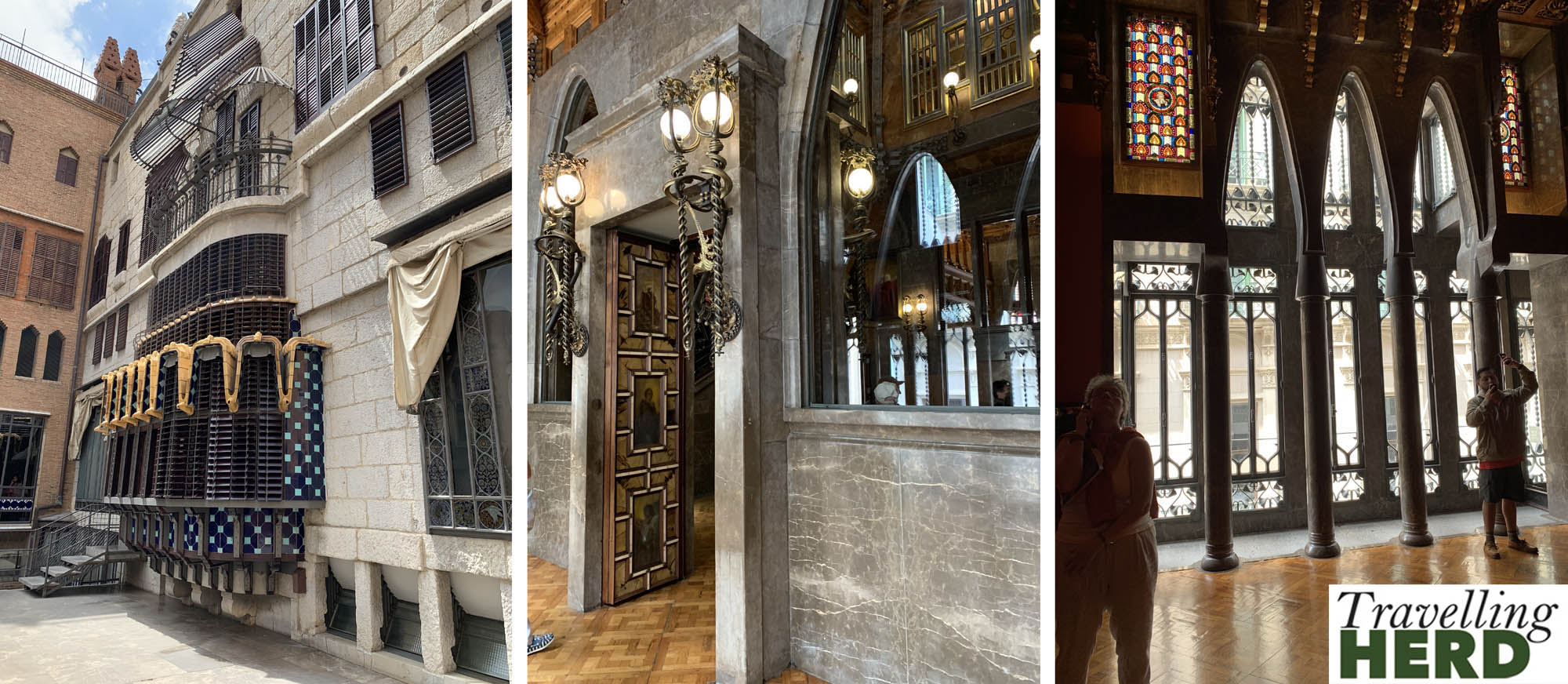
Built between 1886 and 1890 Palau Güell is the only example of Gaudi’s domestic architecture which was completed and has not undergone significant alterations. Gaudi made frequent use of the parabola in the construction of this building. There are stables in the basement below the living quarters and in the main part of the house the rooms lead off a vast atrium which rises seven stories and is crowned by a parabolic dome pierced by small openings to admit gentle indirect sunlight. The decoration is both detailed and magnificent, using the best quality materials.
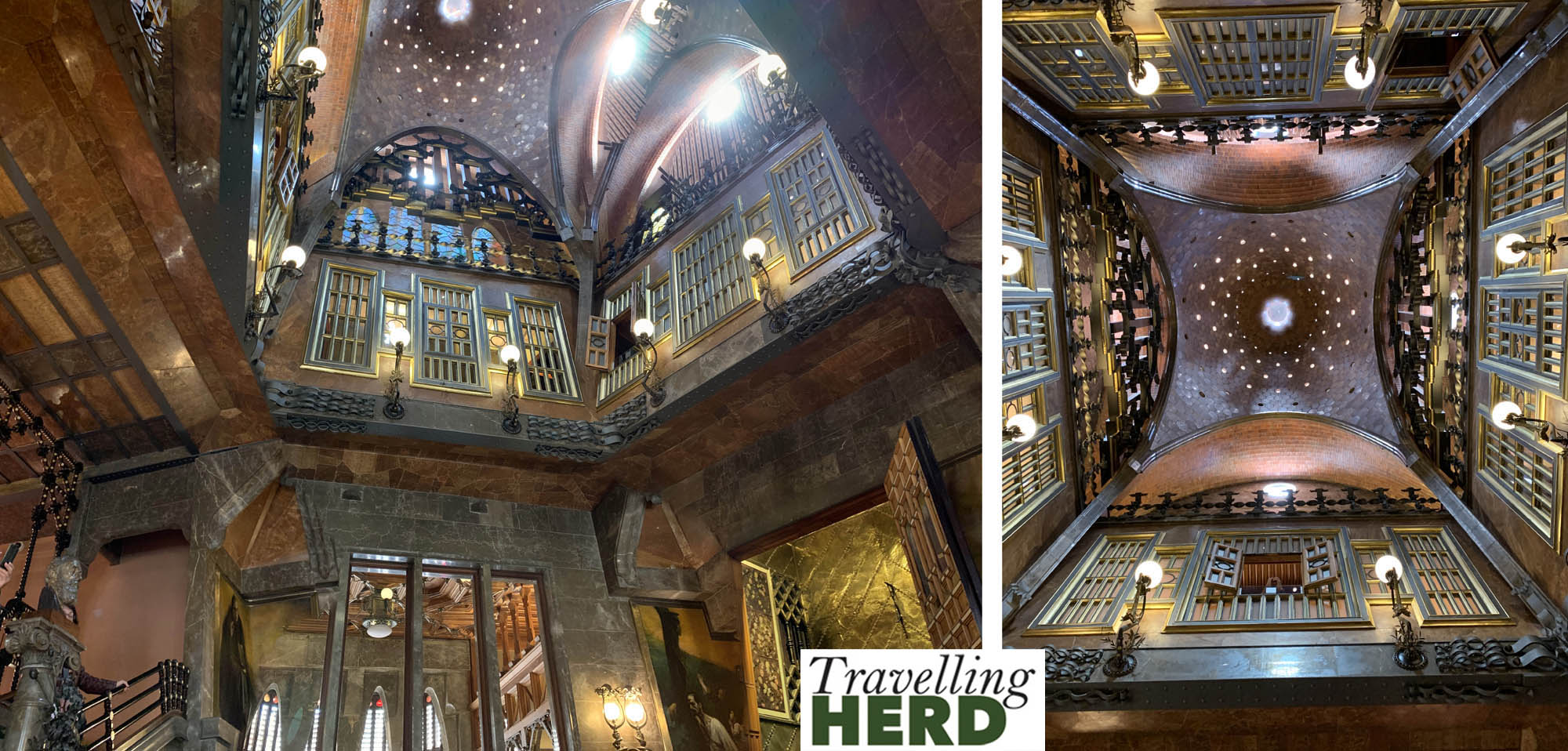
The roof terrace on the top of the building features 20 characteristic chimneys designed by Gaudi as well as views across the city.
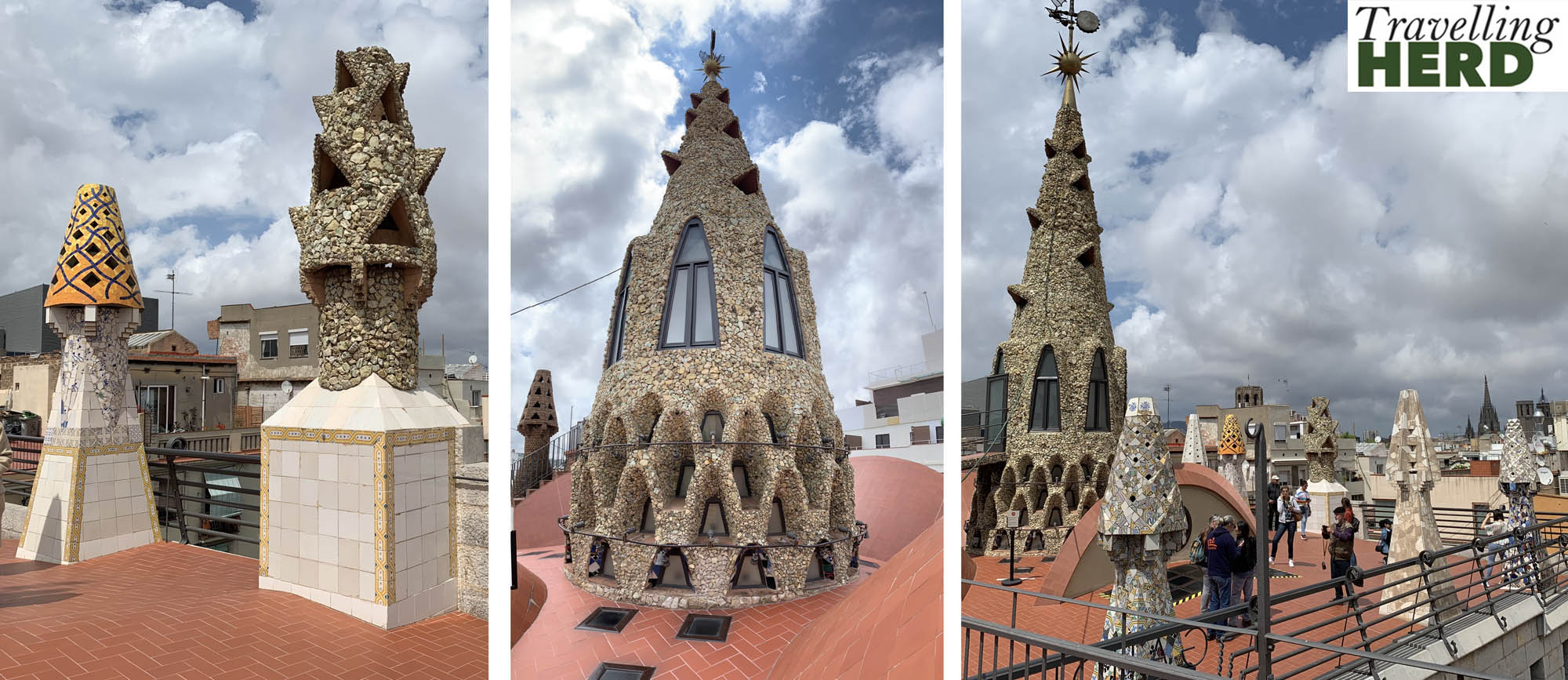
Our route took in just eleven pages from our Modernisme Route guide book and there are many more modernist buildings to entice us back to Barcelona again.
Current Route Map:
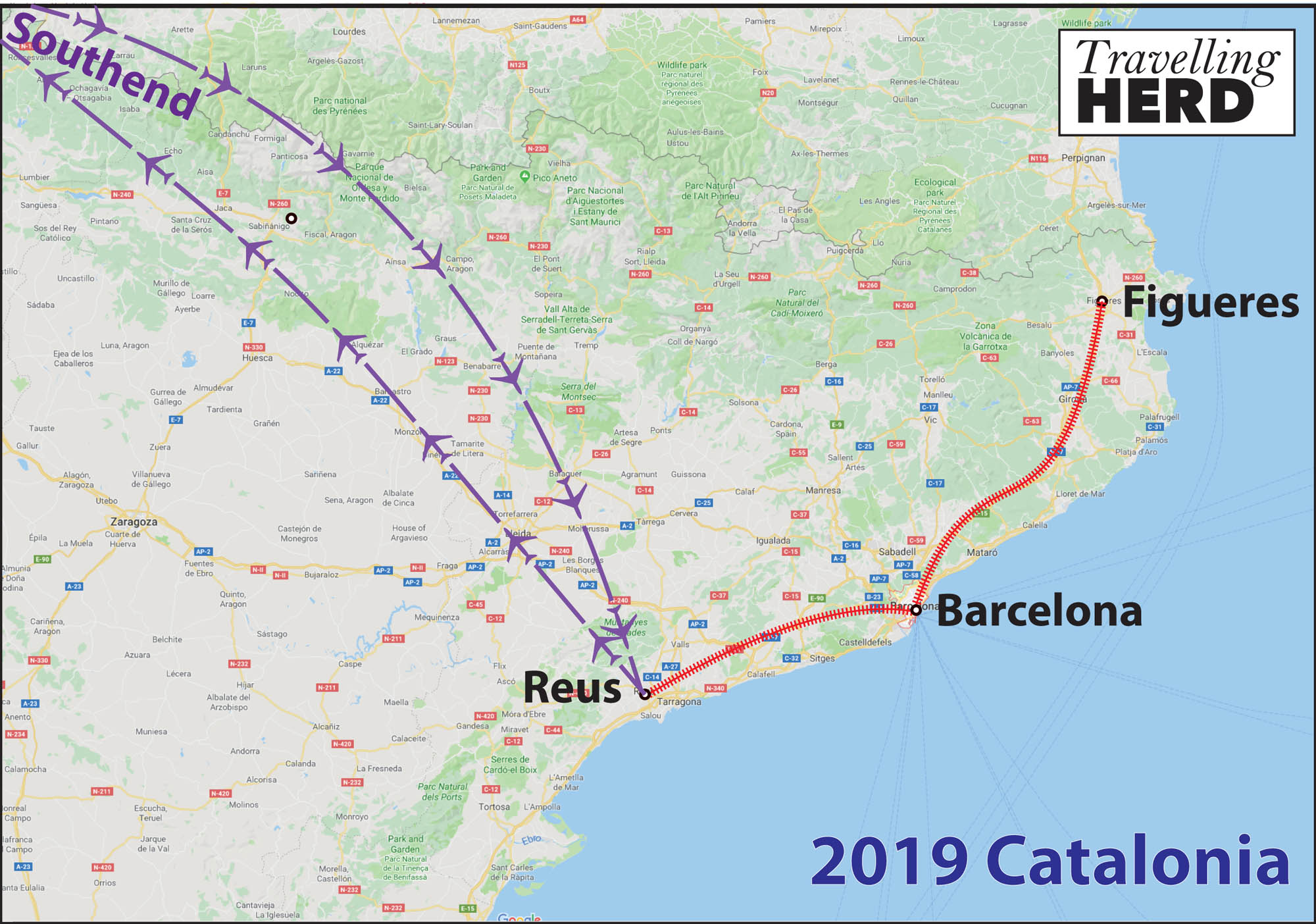
Selfie of the day:
